40 cfdisk label type
cfdisk(8) - Linux manual page - Michael Kerrisk Since version 2.25 cfdisk supports MBR (DOS), GPT, SUN and SGI disk labels, but no longer provides any functionality for CHS (Cylinder-Head-Sector) addressing. CHS has never been important for Linux, and this addressing concept does not make any sense for new devices. Since version 2.25 cfdisk also does not provide a 'print' command any more. cfdisk(8) — Linux manual pages - Courier Mail Server The default device is /dev/sda. Note that cfdisk provides basic partitioning functionality with a user-friendly interface. If you need advanced features, use fdisk(8) instead. Since version 2.25 cfdisk supports MBR (DOS), GPT, SUN and SGI disk labels, but no longer provides any functionality for CHS (Cylinder-Head-Sector) addressing.
cfdisk(8) — Arch manual pages Since version 2.25 cfdisk supports MBR (DOS), GPT, SUN and SGI disk labels, but no longer provides any functionality for CHS (Cylinder-Head-Sector) addressing. CHS has never been important for Linux, and this addressing concept does not make any sense for new devices. Since version 2.25 cfdisk also does not provide a 'print' command any more.
Cfdisk label type
How to Install Arch Linux: Beginner's Step-by-Step Installation … Web13.07.2022 · Now let’s start creating a disk layout partition table by running the cfdisk command against the machine’s hard drive. cfdisk /dev/sda. Select GPT label type and hit Enter. ... Type the below command to install the Xorg as a display server. cfdisk: cannot set partition as bootable / Newbie Corner / Arch Linux ... cfdisk /dev/sda to create the necessary partitions. However, the option to mark a partition as bootable does not appear. Oddly, when I first run cfdisk, it does not ask what type of label type I want to use, as it did when I installed arch in the VM. Partition like a pro with fdisk, sfdisk and cfdisk - Linux-natives cfdisk. The command cfdisk servers the same purpose as fdisk with the difference that it provides a slightly fancier user interface based on ncurses so there are menus one can browse with arrows and the tab button without having to remember the single letter commands fdisk uses. Screenshot of cfdisk sfdisk. The third tool in the suite is sfdisk ...
Cfdisk label type. LINUX - fdisk : how to label a partition? - Learn in 30 Sec from ... The following basic command list all existing disk partition on your system. The '-l' argument stand for (listing all partitions) is used with fdisk command to view all available partitions on Linux. The partitions are displayed by their device's names. For example: /dev/sda, /dev/sdb or /dev/sdc. Linux Code Install Arch Linux in VMware Workstation Oct 27, 2020 · Select gpt for the label type and press enter. You will now see that there is 20G of free space on the device that we may use to create our partitions. We will be creating three partitions, a FAT32 EFI partition, an ext4 root(/) partition and a swap partition. Press enter to select New, then type 500M and press enter to create the EFI partition ... Install Arch Linux in VMware Workstation Web27.10.2020 · Select gpt for the label type and press enter. You will now see that there is 20G of free space on the device that we may use to create our partitions. We will be creating three partitions, a FAT32 EFI partition, an ext4 root(/) partition and a swap partition. Press enter to select New, then type 500M and press enter to create the EFI partition ... cfdisk command in Linux with examples - GeeksforGeeks Example: Select the size 2GB. Enter -> and select primary. Similarly we can do a logical partition also. After sizing the partition, select what type do you want, in my case, I am choosing Linux Swap. After selecting the size and type write to the disk: You will see a prompt like this:
What to do if the 'select label type' doesn't show up during ... - GitHub according to the manual of cfdisk, there u just cant (if im right; viewed it on deb10, so things may have changed in newer versions) so u need to choose fdisk in the installer, where p will give u the info about the current label, and g G o or s for gpt sgi dos sun respectively cfdisk(8) - Void Linux manpages cfdisk is a curses-based program for partitioning any block device. The default device is /dev/sda. Note that cfdisk provides basic partitioning functionality with a user-friendly interface. If you need advanced features, use fdisk (8) instead. All disk label changes will remain in memory only, and the disk will be unmodified until you decide ... GitHub - billw2/rpi-clone: A shell script to clone a booted disk. Web24.05.2020 · Note - if a larger USB disk is manually partitioned to create more than three partitions as in example 7, a smaller disk can be initialize cloned to only if it is large enough to hold at least part of the last source partition. If it is not, then the clone will have to be to a two partition -f2 clone or a clone to a manually partitioned destination. Linux 查看磁盘分区、文件系统、磁盘的使用情况相关的命令和工具介绍 - Hanson666 -... Jul 01, 2017 · cfdisk 也是一款不错的分区工具;在有些发行版中,此工具已经从util-linux包中剔除;cfdisk 简单易用是他的特点;和DOS中的fdisk 相似;在本标题中,我们只来解说如何查看机器的中的磁盘分区状况及所用的文件系统等; 查看磁盘分区的用法 cfdisk -Ps 磁盘设备名; 比如
What's the difference between GPT, DOS, SGI and SUN disk ... 15 Sept 2019 — You need to connect the disk of 1 TB in debian. As I understand it, use GPT for disks over 2 TB. What better label to choose the disk on ... Making GPT Partition Table and Creating Partitions Using parted in ... After some struggling with parted, I finally make a partition on the new 6TB RAID 0 storage array. Here is the process. pc ~ # parted /dev/sdc GNU Parted 2.3 Using /dev/sdc Welcome to GNU Parted! Type 'help' to view a list of commands. (parted) mklabel GPT Warning: The existing disk label on /dev/sdc will be destroyed and all data on this disk ... cfdisk - Wikipedia cfdisk is a Linux partition editor, similar to fdisk, ... SGI or SUN disk labels. It also provides information about mount points and general partition information like partition names, types/flags, sizing and UUIDs. If invoked without arguments, cfdisk attempts to read the current partition table from the disk drive and present its findings. ... How to install Arch Linux on VirtualBox WebType the command: cfdisk You will see gpt, dos, sgi, and sun. Select the dos option and press enter. Here you will see the main disk space, which is 20 GB. To change this, press on the free space and type 10G. Press enter and then click on the “primary” partition. Now select the “bootable” type by pressing enter on bootable.
What is disk label in Linux? - CompuHoy.com The disk label type is the type of Master Boot Record. See . The disk identifier is a randomly generated ...
cfdisk: display or manipulate a disk partition table - Linux Man Pages (8) Since version 2.25 cfdisk supports MBR (DOS), GPT, SUN and SGI disk labels, but no longer provides any functionality for CHS (Cylinder-Head-Sector) addressing. CHS has never been important for Linux, and this addressing concept does not make any sense for new devices. Since version 2.25 cfdisk also does not provide a 'print' command any more.
Blackarch install WebIf your storage device already has a label type, you won't see this, ... and press enter. The * should appear as on the screen. If your device is an EFI device make sure to select Type and set it to EFI Type. Afterwards go to the second partition, ... Before you quit cfdisk you must save this partition table. Go to Write and press enter.
10 Commands to Check Disk Partitions and Disk Space on Linux Aug 13, 2020 · Commands like fdisk, sfdisk and cfdisk are general partitioning tools that can not only display the partition information, but also modify them. 1. fdisk. Fdisk is the most commonly used command to check the partitions on a disk. The fdisk command can display the partitions and details like file system type.
Arch Linux cfdisk asking for disk label type I am trying to partition my hard drive I just wiped with dban so that I can install arch linux but when i run cfdisk /dev/sda. It says: Select table type ...
How to Create Disk Partitions using cfdisk - The Geek Diary 1. First, select the option new in the cfdisk menu. # cfdisk /dev/sdb 2. Select the partition type as 'primary' on the next screen. 3. On the next screen specify the size of the partition you want to create. In our example we will create a partition of 200MB. 4. Now specify the start of the partition as 'beginning of free space'. 5.
cfdisk: Display or manipulate a disk partition table - Carta.tech The default device is /dev/sda. Note that cfdisk provides basic partitioning functionality with a user-friendly interface. If you need advanced features, use fdisk (8) instead. Since version 2.25 cfdisk supports MBR (DOS), GPT, SUN and SGI disk labels, but no longer provides any functionality for CHS (Cylinder-Head-Sector) addressing.
File System - Documentation - Rocky Linux Jan 04, 2022 · $ sudo cfdisk /dev/sda Disk: /dev/sda Size: 16 GiB, 17179869184 bytes, 33554432 sectors Label: dos, identifier: 0xcf173747 Device Boot Start End Sectors Size Id Type ...
partition - Changing label type in Arch Linux cfdisk - Unix & Linux ... Run fdisk -l You should get all of your storage devices. Find the one you want to partition. It should be something like /dev/nvme0n1 or /dev/sda but your knowledge may vary. Once you find it run fdisk . E.x. /fdsik /dev/sda You should now see something like this Welcome to fdisk (util-linux 2.35.2).
sfdisk(8) - Linux manual page - Michael Kerrisk -X, --label type Specify the disk label type (e.g., dos, gpt, ...). If this option is not given, then sfdisk defaults to the existing label, but if there is no label on the device yet, then the type defaults to dos. The default or the current label may be overwritten by the "label: " script header line.
Linux Cfdisk Command Help and Examples - Computer Hope cfdisk [-agvz] [-c cylinders] [-h heads] [-s sectors-per-track ] [-P opt] [ device ] Commands cfdisk commands can be entered by pressing the desired key (pressing Enter after the command is not necessary). Here is a list of the available commands: All the commands can be entered with either upper or lowercase letters (except for Writes ).
How to Format a Bootable USB to Normal | Average Linux User Jan 28, 2019 · 'ALU' is the label. You can replace it with whatever you prefer. It is optional. /dev/sdb1 is the device. sdb is the name of the device but sdb1 refers to the first partition of that device. Now, a bootable USB is formatted to normal and it is ready to use. Open the file manager, and you can write information into it.
Unix & Linux: Arch Linux cfdisk asking for disk label type Unix & Linux: Arch Linux cfdisk asking for disk label typeHelpful? Please support me on Patreon: thanks & praise t...
fdisk - ArchWiki - Arch Linux Partition type. When using MBR, fdisk will ask for the MBR partition type. Specify it, type p to create a primary partition or e to create an extended one. There may be up to four primary partitions. fdisk does not ask for the partition type ID and uses 'Linux filesystem' by default; you can change it later. Partition number
[SOLVED] set partition label using cfdisk - LinuxQuestions.org Right click the drive or partition you want to edit and select unmount. (If this is the drive you are currently using, then you may have to do all this from within the live CD because you won't be able to unmount a busy drive.) 4. Next right click on the drive or partition you want to edit and select label. 5 Enter the label you want to use and ...
Arch Linux cfdisk asking for disk label type 15. I am trying to partition my hard drive I just wiped with dban so that I can install arch linux but when i run. cfdisk /dev/sda. It says: Select table type gpt dos sgi sun. I don't know which to choose. It also says: Device does not contain a recognized partition table. arch-linux partition hard-disk cfdisk.
Label type : linux4noobs Label type While installing Arch Linux, we have to create partitions. I prefer to use cfdisk, but when I start the utility, it gives me option to choose between gpt, dos, sgi, and sun. I don't understand which one to choose. I believe most new systems come with gpt as default? But while following this guide, it tells me to format it in dos.
How to Install Arch Linux {Comprehensive Step-by-Step Guide} Dec 09, 2020 · 2. Partition the drive using the cfdisk command: cfdisk /dev/sdX. Where X is the drive letter of the disk you want to partition. 3. Using the arrow keys, select dos as the label type, and press Enter.
Partition like a pro with fdisk, sfdisk and cfdisk - Linux-natives cfdisk. The command cfdisk servers the same purpose as fdisk with the difference that it provides a slightly fancier user interface based on ncurses so there are menus one can browse with arrows and the tab button without having to remember the single letter commands fdisk uses. Screenshot of cfdisk sfdisk. The third tool in the suite is sfdisk ...
cfdisk: cannot set partition as bootable / Newbie Corner / Arch Linux ... cfdisk /dev/sda to create the necessary partitions. However, the option to mark a partition as bootable does not appear. Oddly, when I first run cfdisk, it does not ask what type of label type I want to use, as it did when I installed arch in the VM.
How to Install Arch Linux: Beginner's Step-by-Step Installation … Web13.07.2022 · Now let’s start creating a disk layout partition table by running the cfdisk command against the machine’s hard drive. cfdisk /dev/sda. Select GPT label type and hit Enter. ... Type the below command to install the Xorg as a display server.
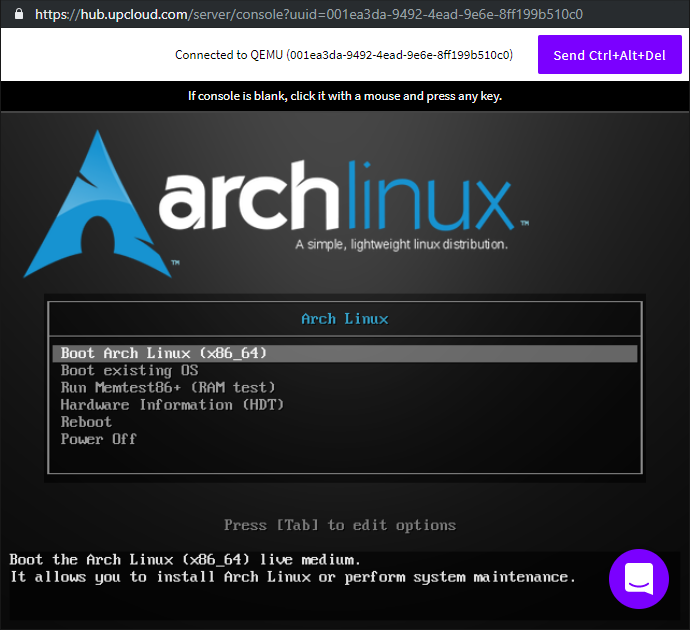


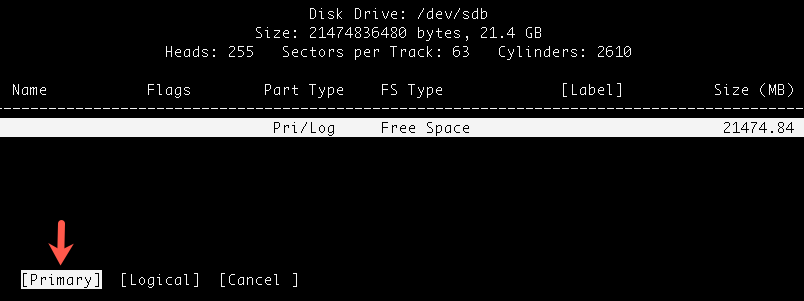

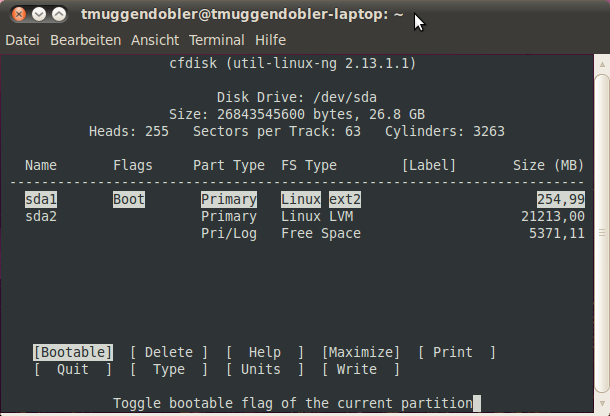


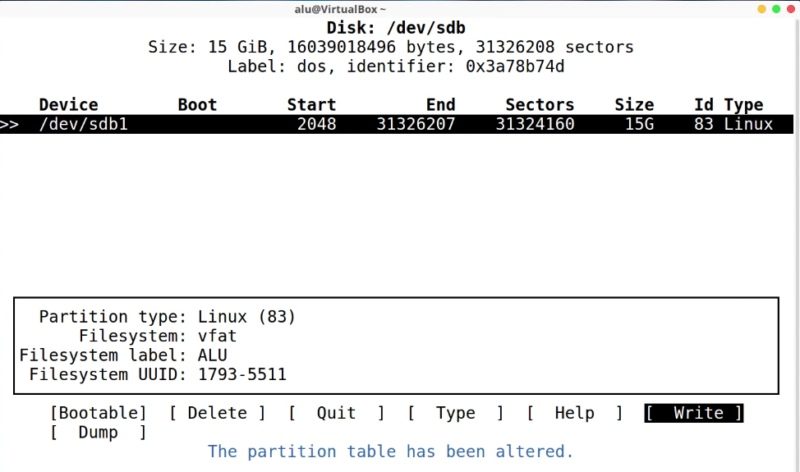

![How to Install Arch Linux [Beginner's Guide]](https://www.debugpoint.com/wp-content/uploads/2020/11/cfdisk-partition-type-Install-Arch-Linux.jpg)

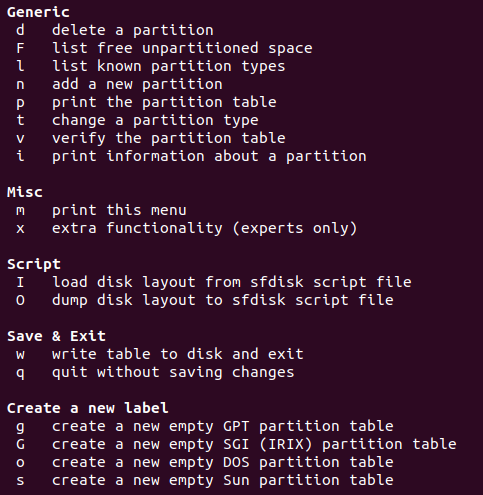
![Install ClearOS Using USB [ClearOS Documentation]](https://documentation.clearos.com/_media/documentation:clearos_guides:cfdisk-write.png?w=550&tok=c1541e)

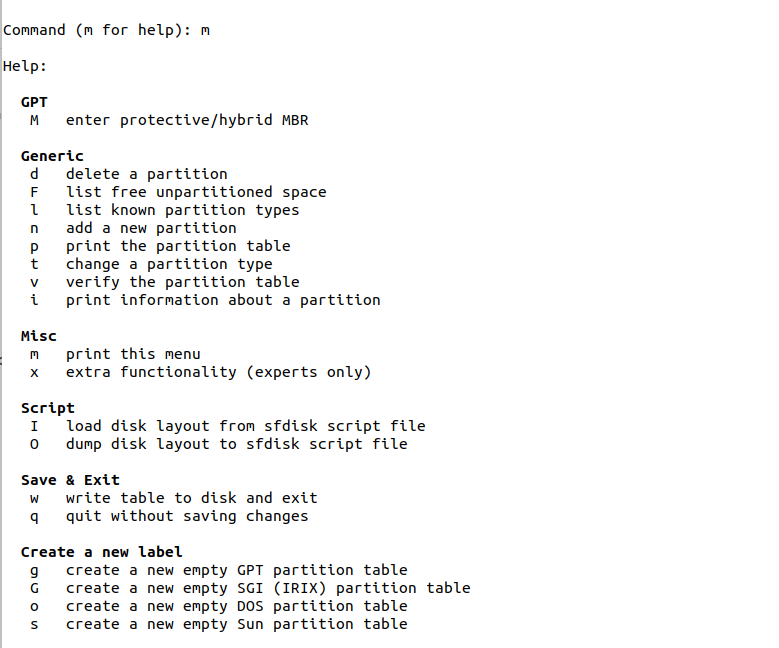
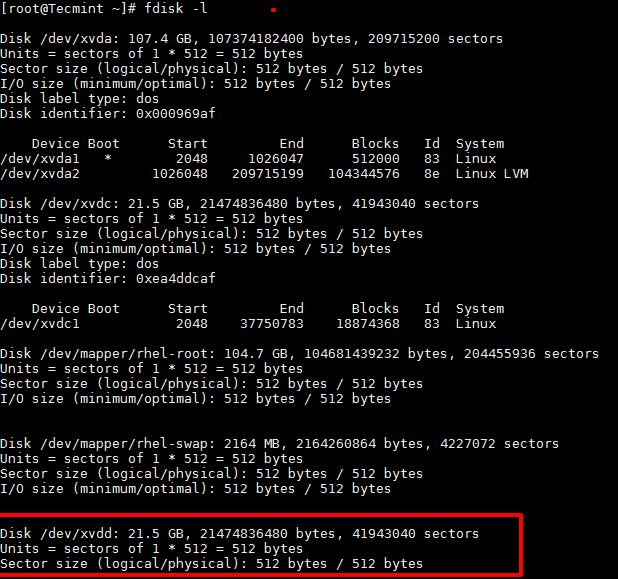
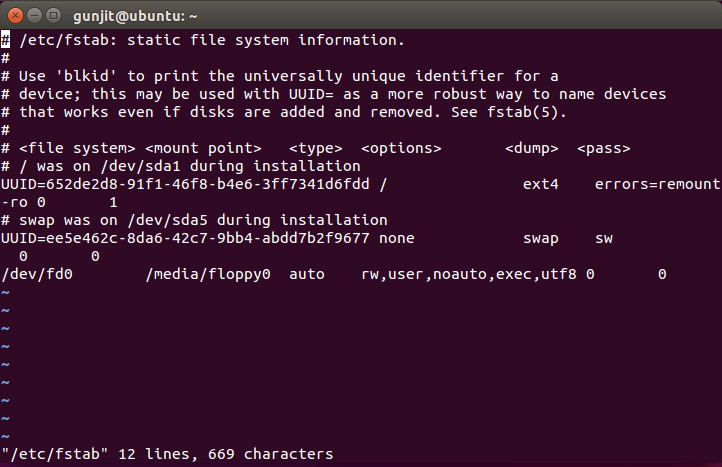
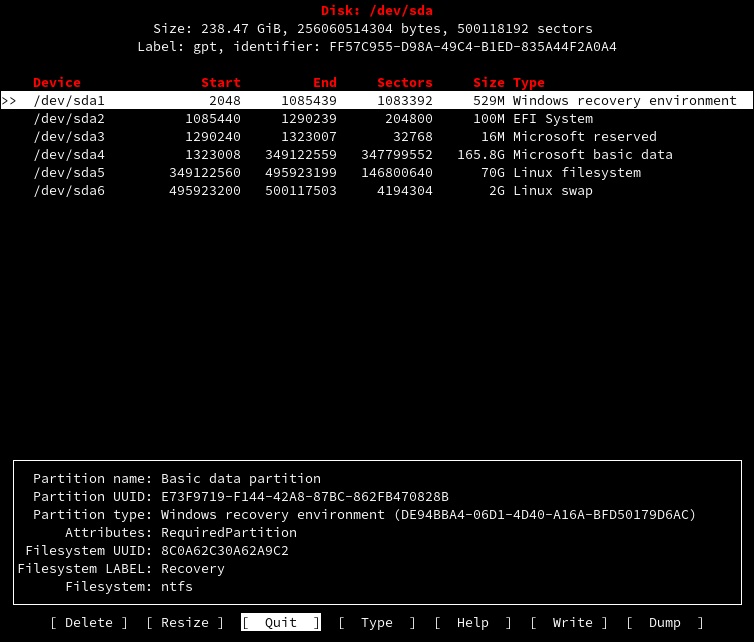
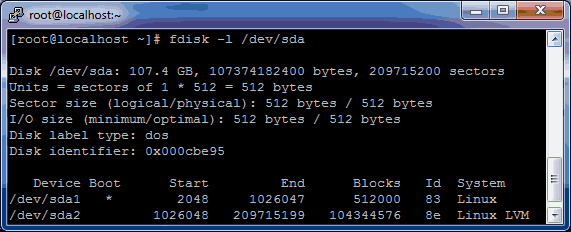
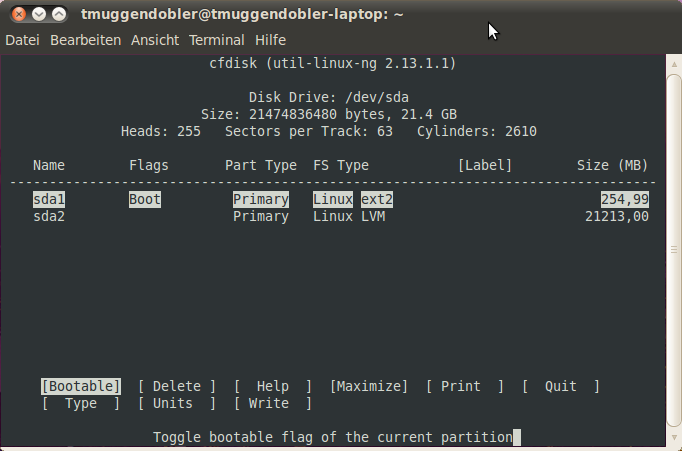
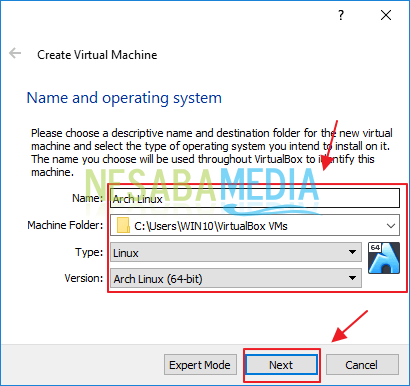





![How to Install Deepin Desktop in Arch Linux [Complete Guide]](https://www.debugpoint.com/wp-content/uploads/2020/12/final-partition-list-in-cfdisk-1024x178.jpg)




Post a Comment for "40 cfdisk label type"